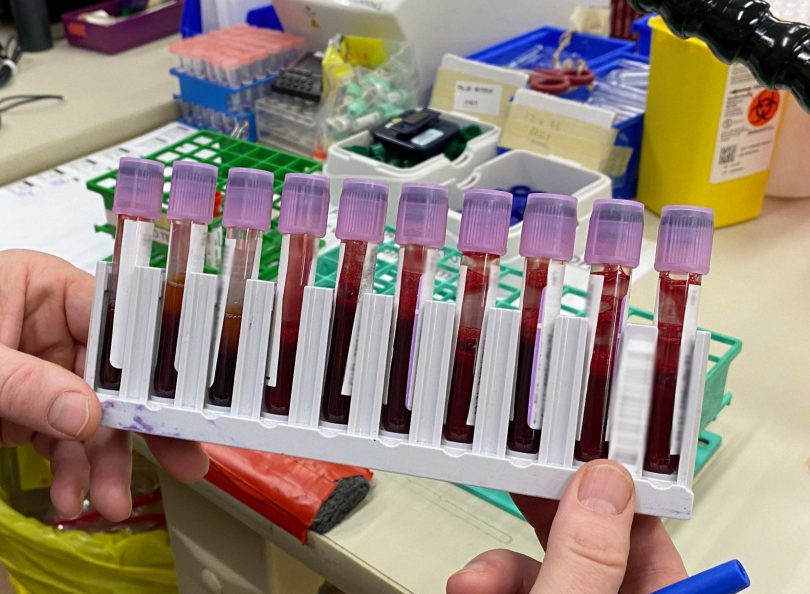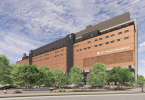National Medical Laboratory Week takes place April 10-16. Sponsored by the Canadian Society of Medical Laboratory Science, it’s a time to promote awareness and understanding of the role of laboratory professionals in the health care system.
So you’ve just given a blood sample. Have you ever wondered what happens in the window of time after your blood has been collected and before you receive your results?
As it turns out, a lot of behind-the-scenes analysis performed by highly skilled medical laboratory professionals.
Around the clock service
Providence Health Care has two laboratory sites: the main lab is located on the second floor of St. Paul’s Hospital and a smaller lab is located at Mount Saint Joseph Hospital. Both provide 24/7 service to ensure your physician receives timely and accurate test results.
At the St. Paul’s lab, blood, tissue samples and other body fluids first arrive at a central preprocessing area. Here, staff enter the samples into the computer system and sort them.
About 90 per cent of the blood samples analyzed at St. Paul’s Hospital arrive at the lab from the wards via the pneumatic tube system. The rest are either collected from outpatients who come in with requisitions, or they arrive by courier from other hospitals or LifeLabs locations around the province.

Once the samples are ready for testing, they go to the core laboratory area where routine bloodwork takes place. Here, trained professionals work against the constant hum of high-tech equipment while computer screens actively plot data.
The barcode affixed to each tube indicates what tests have been ordered. Often patients give multiple tubes of blood because different tests are required.
The first step in the testing process is to centrifuge the blood, if centrifugation is required. This process spins the samples at a high speed to separate the blood into its components: plasma, red blood cells, white blood cells and platelets.
Once the samples have been centrifuged they are loaded into the appropriate analyzers, which run the required tests and produce results in short order.

Some common blood tests include:
- Complete blood count (CBC). This test counts red and white blood cells and measures hemoglobin levels and other blood components. The test can uncover anemia, infection and cancer of the blood.
- Basic metabolic panel. This test checks heart, kidney and liver function by measuring certain chemicals in your blood, like glucose, calcium and electrolytes.
- Lipid panel. This test measures the level of fats in your blood, like good cholesterol (HDL), bad cholesterol (LDL) and triglycerides.
- (International Normalized Ratio) INR. This test monitors patients who are on blood thinners.

The lab can turn around most routine blood tests in less than an hour. Specialty and less urgent tests may have to go to other areas of the laboratory where they are run in batches and the turn-around time can be up to a week.
Once the tests are done, lab staff ensure the electronic results are delivered quickly to the patient’s care team for diagnosis and potential treatment. After the results have been communicated, the blood samples are stored for a few days before they are discarded.
EACH YEAR…
– The lab performs about 250,000 blood collections (that’s a lot of pokes!)
– The lab receives 180,000 samples from other hospitals and labs for testing
– 85,000 patients come though the outpatient laboratory to get blood work done
– The lab sends over 1,500 samples to other provinces or countries for very rare or specialized tests
– The lab trains up to 10 students from West Coast College and Vancouver Community College and provides phlebotomy (blood collection) training for BCIT students





